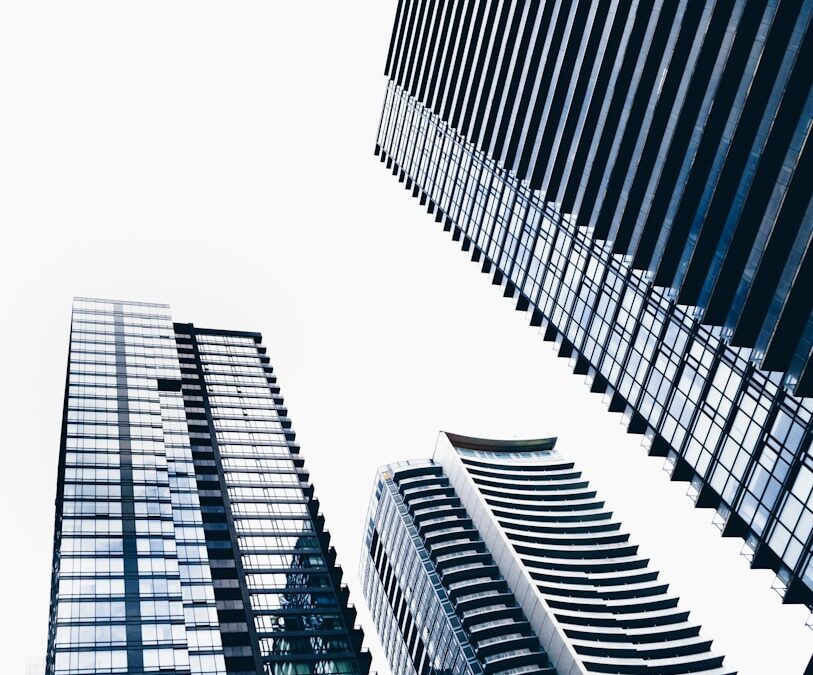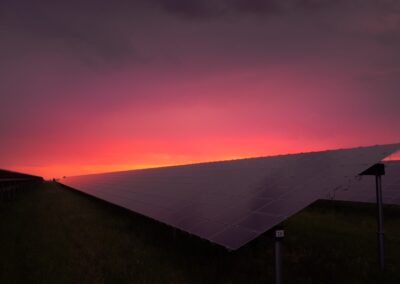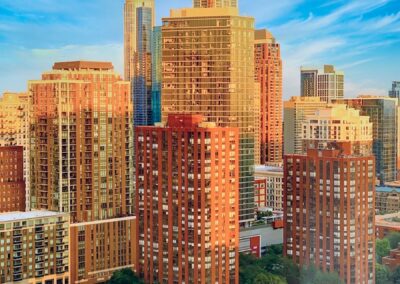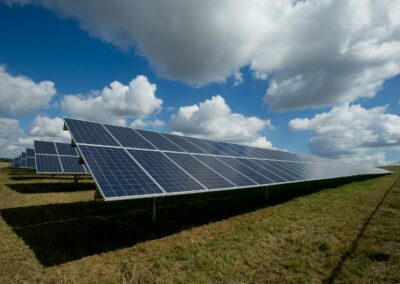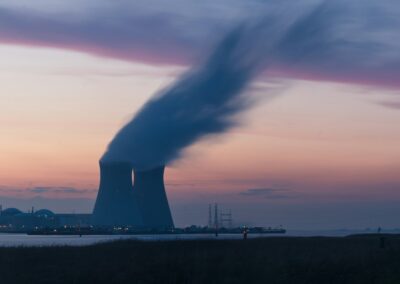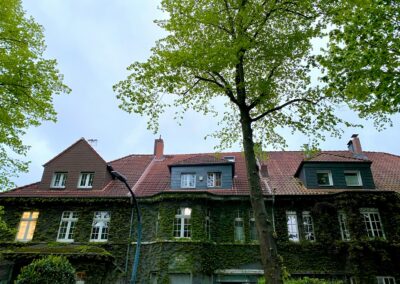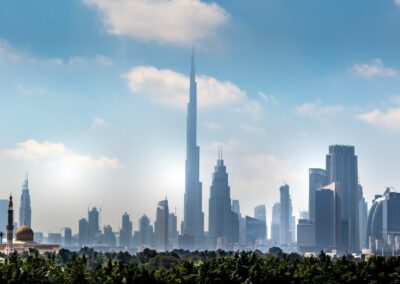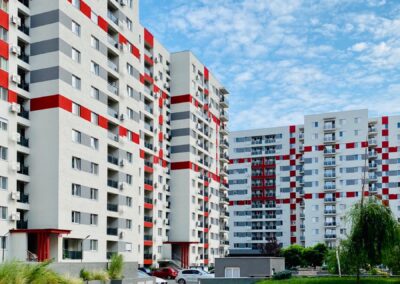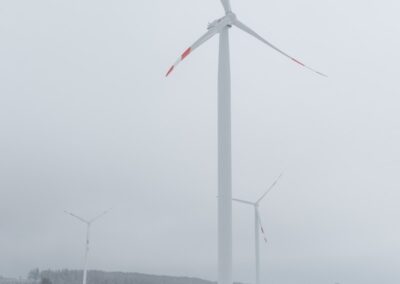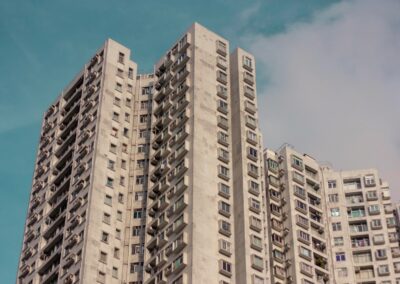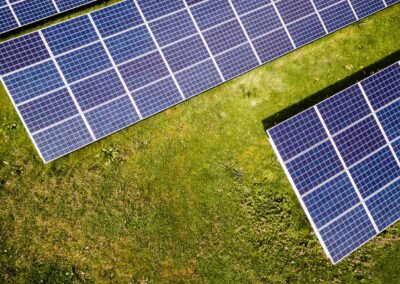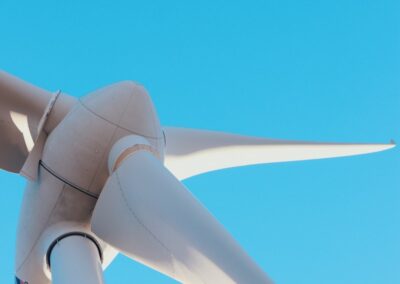Enhancing Energy Efficiency and Sustainability in Urban Architecture
Introduction to the Benefits of Green Roofs and Living Walls
The concept of incorporating green roofs and living walls in high-rise buildings is rapidly gaining popularity as cities seek sustainable solutions to improve energy efficiency and reduce environmental impact. Green roofs, covered with vegetation, and living walls, vertical gardens attached to building exteriors, offer numerous benefits, including enhanced insulation and reduced energy consumption. In regions like Saudi Arabia and the UAE, where urban development is accelerating, these innovations are particularly relevant for achieving sustainability goals.
Green roofs and living walls provide natural insulation, which can significantly reduce the energy required for heating and cooling buildings. This reduction in energy use translates to lower greenhouse gas emissions, contributing to the fight against climate change. Additionally, these green features enhance urban aesthetics, improve air quality, and promote biodiversity in densely populated areas.
In cities like Riyadh and Dubai, where modern architecture often emphasizes high-rise buildings, integrating green roofs and living walls can play a crucial role in creating sustainable and livable urban environments. By adopting these eco-friendly practices, urban planners and developers can contribute to environmental sustainability while enhancing the quality of life for city residents. This article explores the various benefits of green roofs and living walls, focusing on their potential to improve energy efficiency and overall urban resilience.
Energy Efficiency and Insulation Benefits
One of the primary benefits of green roofs and living walls in high-rise buildings is their ability to improve insulation and enhance energy efficiency. Vegetation on rooftops and building exteriors acts as a natural insulator, reducing the amount of heat that enters or escapes the building. This insulation effect is particularly beneficial in regions with extreme temperatures, such as Saudi Arabia and the UAE, where energy consumption for air conditioning is typically high.
Green roofs and living walls help stabilize indoor temperatures, reducing the need for air conditioning in the summer and heating in the winter. This reduction in energy use not only lowers utility costs for building owners and occupants but also decreases the overall carbon footprint of the building. Studies have shown that buildings with green roofs can reduce energy use by up to 25%, depending on the building’s design and the local climate.
Furthermore, the insulating properties of green roofs and living walls can extend the lifespan of building materials by protecting them from temperature fluctuations and UV radiation. This added protection reduces maintenance costs and enhances the building’s durability, making green roofs and living walls a cost-effective investment in the long term. In rapidly developing urban areas like Riyadh and Dubai, where sustainable construction practices are increasingly prioritized, these benefits are highly significant.
Environmental and Aesthetic Advantages
In addition to improving energy efficiency, green roofs and living walls offer numerous environmental benefits. One of the most notable advantages is their ability to improve air quality. Plants absorb carbon dioxide and other pollutants, releasing oxygen and providing cleaner air for urban residents. This natural filtration process is particularly valuable in densely populated cities, where air pollution is a common concern.
Green roofs and living walls also help mitigate the urban heat island effect, a phenomenon where urban areas experience higher temperatures than their rural surroundings due to human activities and the concentration of heat-absorbing materials like concrete and asphalt. By providing shade and reducing surface temperatures, vegetation helps cool the surrounding air, creating a more comfortable and livable urban environment.
Moreover, these green features enhance urban biodiversity by creating habitats for various plant and animal species. In cities like Riyadh and Dubai, where green spaces can be limited, green roofs and living walls offer an innovative solution to support local ecosystems. They provide habitats for birds, insects, and other wildlife, contributing to the overall ecological health of the urban area. Additionally, the aesthetic appeal of green roofs and living walls can improve the visual landscape of cities, making them more attractive to residents and visitors alike.
Promoting Sustainable Urban Development
Integrating green roofs and living walls into high-rise buildings is a crucial step towards promoting sustainable urban development. These eco-friendly practices align with the broader goals of reducing greenhouse gas emissions, conserving natural resources, and enhancing urban resilience. By adopting green roofs and living walls, cities can demonstrate their commitment to sustainability and serve as models for other urban areas.
In Saudi Arabia and the UAE, where urban development is a key driver of economic growth, incorporating green roofs and living walls into building designs can support national sustainability initiatives. For example, Saudi Arabia’s Vision 2030 and the UAE’s Green Growth Strategy both emphasize the importance of sustainable development and environmental conservation. By leveraging green building practices, these regions can achieve their sustainability targets and enhance their global reputation as leaders in sustainable urban development.
Furthermore, the adoption of green roofs and living walls can create new economic opportunities. The demand for sustainable building materials and technologies can stimulate growth in green industries, creating jobs and supporting economic diversification. Additionally, green buildings can attract environmentally conscious tenants and investors, enhancing the marketability and profitability of urban properties.
Leveraging Technology for Enhanced Sustainability
The integration of advanced technologies such as artificial intelligence (AI) and blockchain can further enhance the sustainability benefits of green roofs and living walls. AI can optimize irrigation systems, ensuring that plants receive the right amount of water based on real-time weather conditions and soil moisture levels. This precision reduces water waste and enhances the overall efficiency of green infrastructure.
Blockchain technology can be used to track the lifecycle of building materials, ensuring transparency and accountability in sustainable construction practices. By recording data on the sourcing, transportation, and installation of green building materials, blockchain can help verify the environmental impact of construction projects and promote the use of eco-friendly materials.
Additionally, the metaverse, a virtual-reality space where users can interact with a computer-generated environment, offers innovative opportunities for urban planning and design. Urban planners can use the metaverse to simulate the impact of green roofs and living walls on building performance and urban microclimates. This virtual testing ground allows for the optimization of green infrastructure before implementation in the real world, ensuring that sustainability goals are met efficiently and effectively.
Conclusion
In conclusion, the benefits of green roofs and living walls in high-rise buildings are significant and multifaceted. By improving insulation and energy efficiency, enhancing air quality, and promoting biodiversity, these green features contribute to the overall sustainability and livability of urban environments. Regions like Saudi Arabia and the UAE, with their ambitious visions for sustainable development, can greatly benefit from adopting green roofs and living walls.
The integration of advanced technologies such as AI and blockchain further enhances the sustainability and efficiency of green infrastructure. These technologies optimize resource use, ensure transparent supply chains, and reduce environmental impact. By leveraging modern technology, green roofs and living walls can play a crucial role in creating resilient and sustainable urban food systems.
Ultimately, the success of green roofs and living walls depends on the collective efforts of policymakers, business leaders, and technologists. By working together to implement sustainable building practices, we can create a future where urban areas are environmentally sustainable, economically resilient, and socially vibrant. This vision aligns with the broader goals of regions like Saudi Arabia and the UAE, where innovation and sustainability go hand in hand.
—
#GreenRoofs, #LivingWalls, #EnergyEfficiency, #HighRiseBuildings, #AI, #Blockchain, #UAE, #SaudiArabia, #ModernTechnology, #BusinessSuccess, #LeadershipSkills

